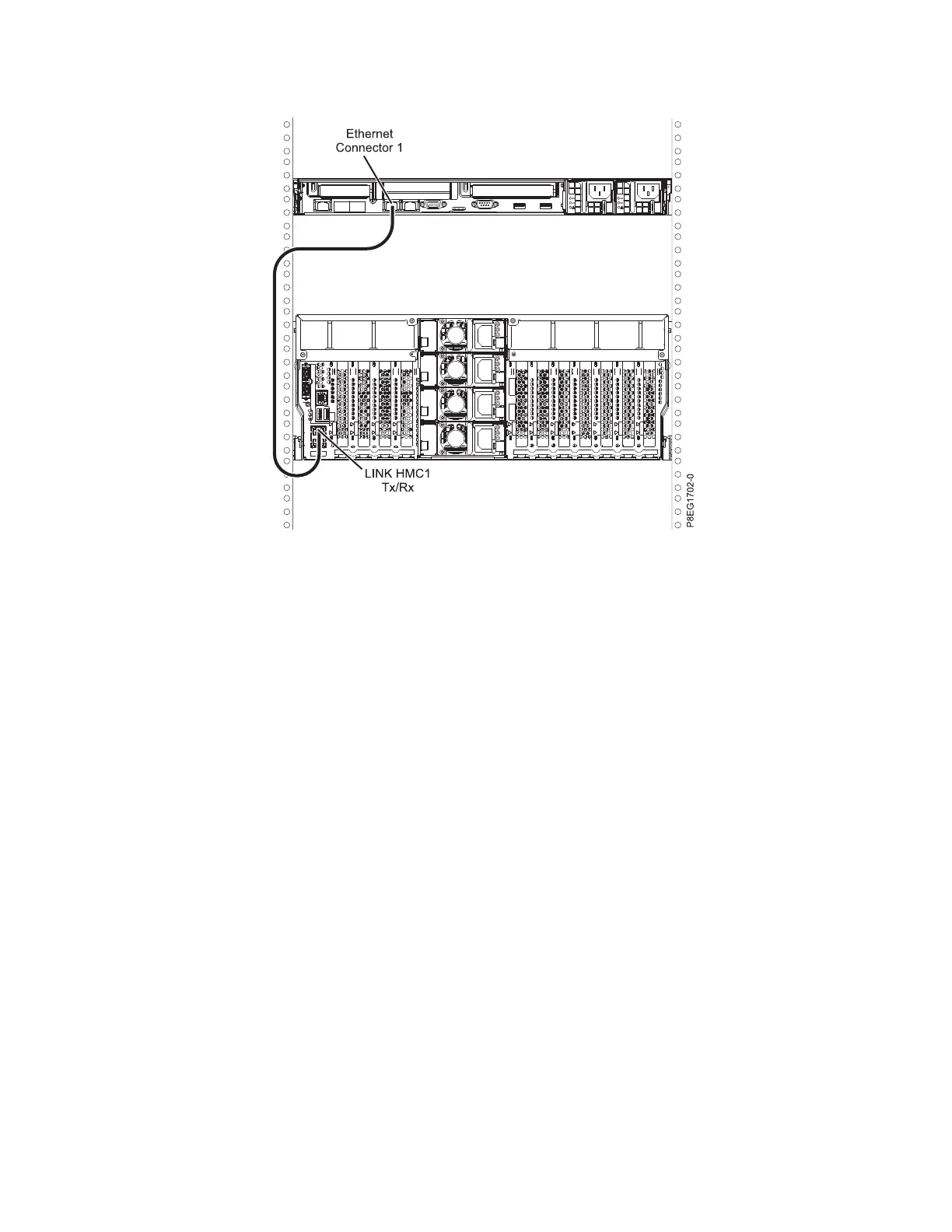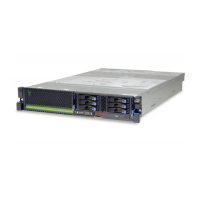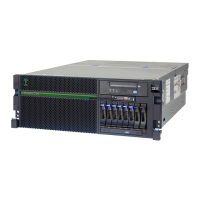2. To learn how to connect an HMC to a private network so that it can manage more than one managed
system, see HMC network connections (http://www.ibm.com/support/knowledgecenter/POWER8/
p8hai/netconhmc.htm).
Notes:
v You can also have multiple systems that are attached to a switch that is then connected to the
HMC. For instructions, see HMC network connections (http://www.ibm.com/support/
knowledgecenter/POWER8/p8hai/netconhmc.htm).
v If you are using a switch, ensure that the speed in the switch is set to Autodetection. If the server
is directly attached to the HMC, ensure the Ethernet adapter speed on the HMC is set to
Autodetection. For information about how to set media speeds, see Setting the media speed
(http://www.ibm.com/support/knowledgecenter/POWER8/p8hai/lanmediaspeed.htm).
3. If you are connecting a second HMC to your managed server, connect it to the Ethernet port that is
labeled HMC2 on the managed server.
4. Continue with “Routing cables through the cable-management arm and connecting expansion units”
on page 33.
Cabling the server and accessing the IVM:
When you install the Virtual I/O Server (VIOS) in an environment where no Hardware Management
Console (HMC) is present, the VIOS automatically creates a management partition whose interface is the
Integrated Virtualization Manager (IVM).
Note: If your system was ordered with IVM preloaded, you can install IBM i as a 'guest' of IVM.
To prepare for and install the VIOS and to enable the IVM, complete the following steps:
1. Using a serial cable that is equipped with a null modem, connect the ASCII terminal to the serial port
on the rear of the server.
Figure 20. Attaching the HMC to the managed system
Installing the IBM Power System S814 (8286-41A) 31
